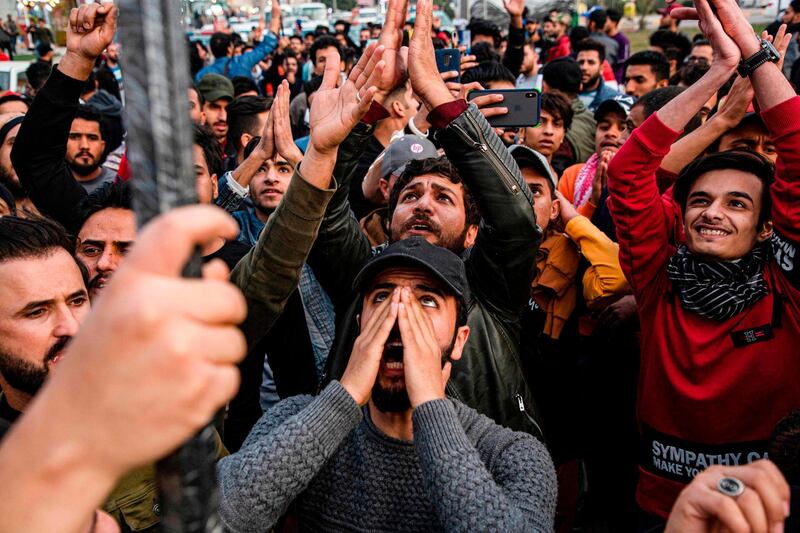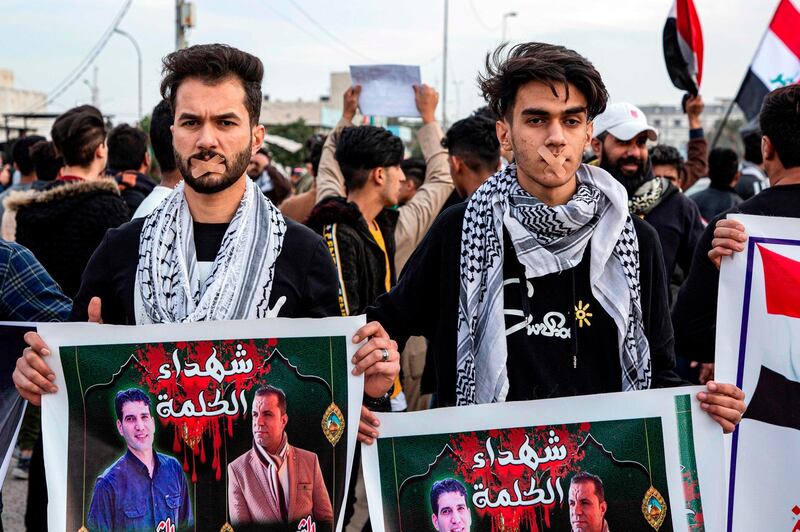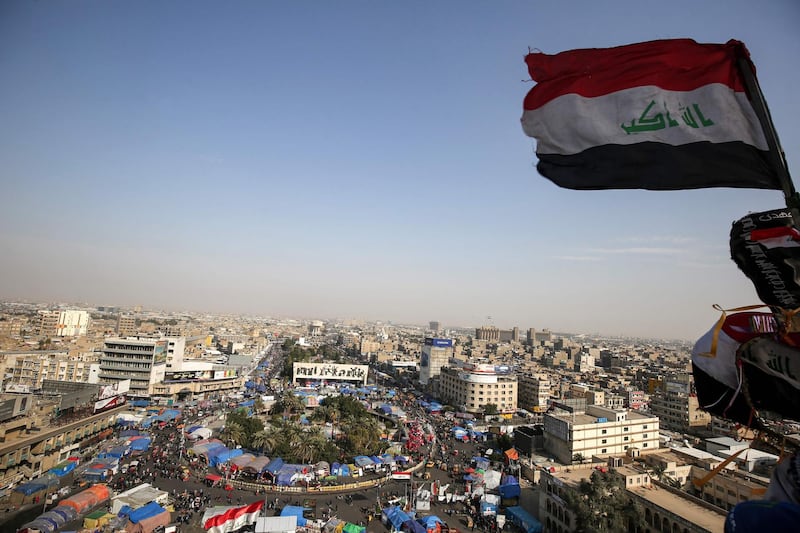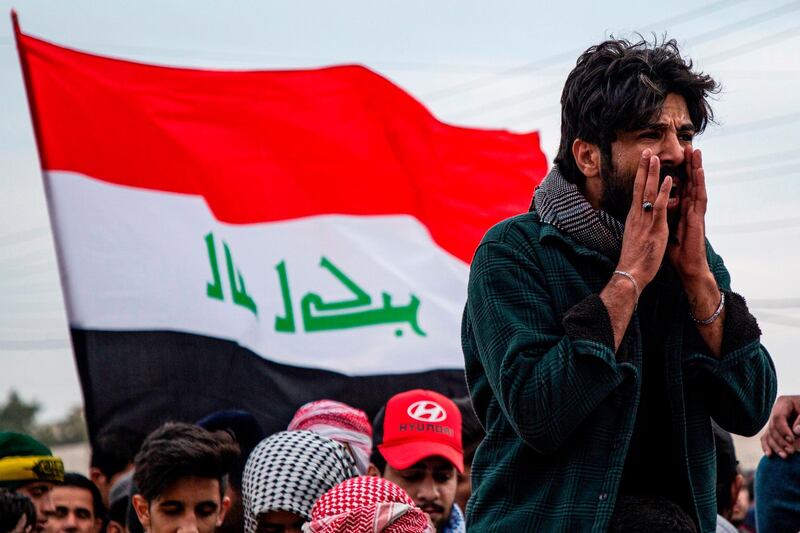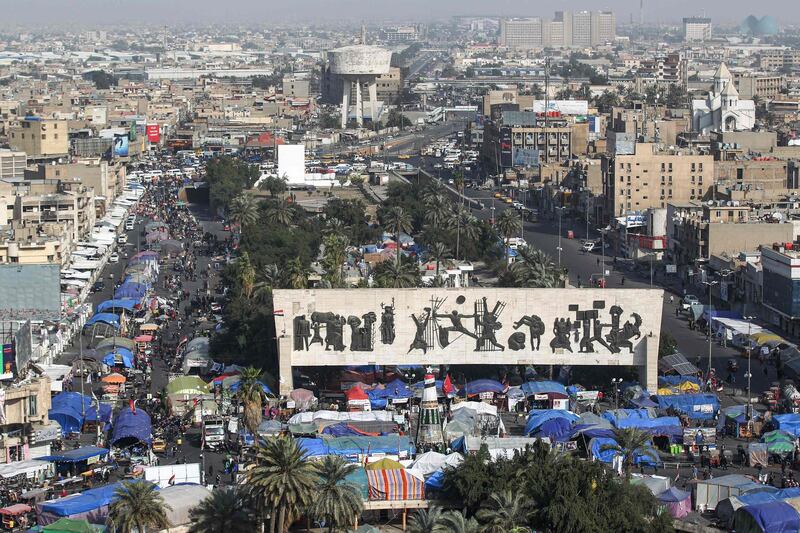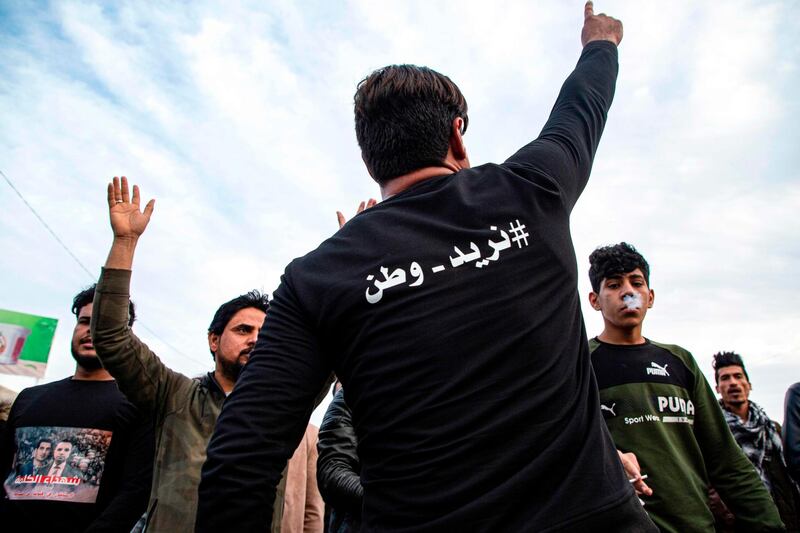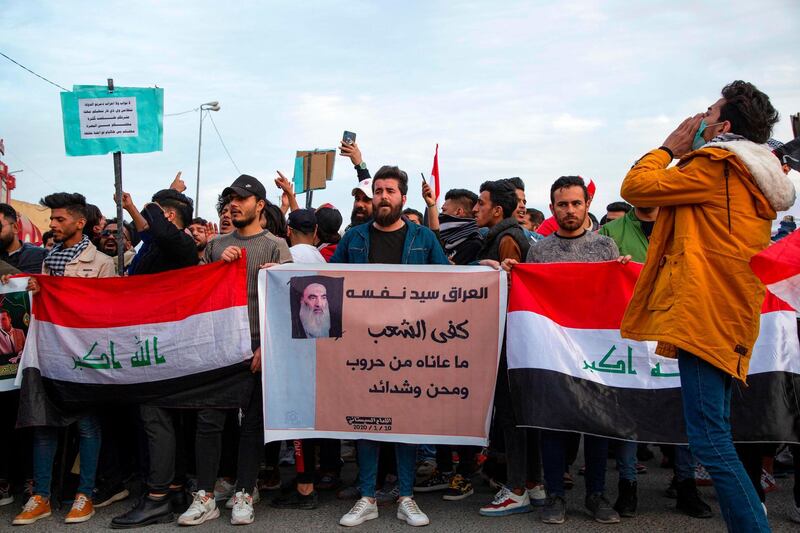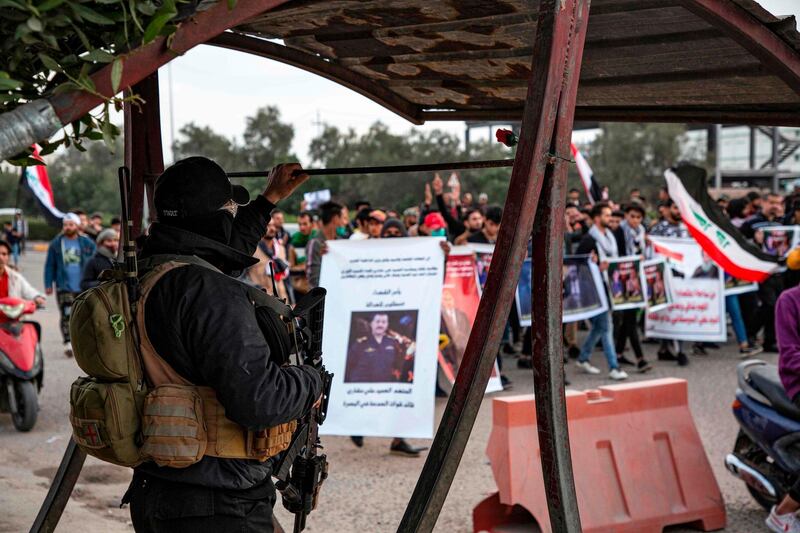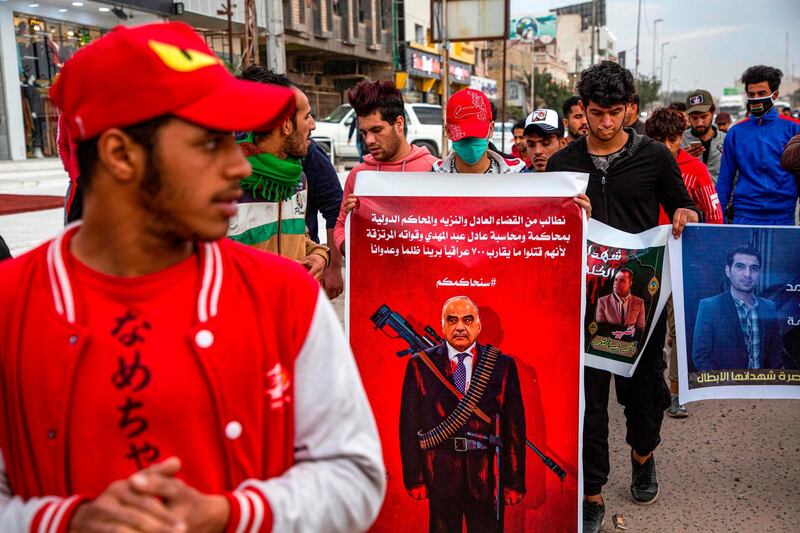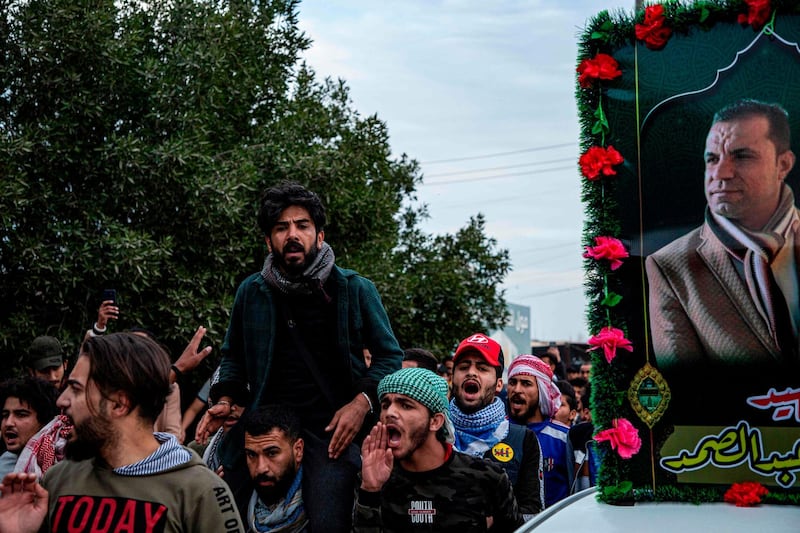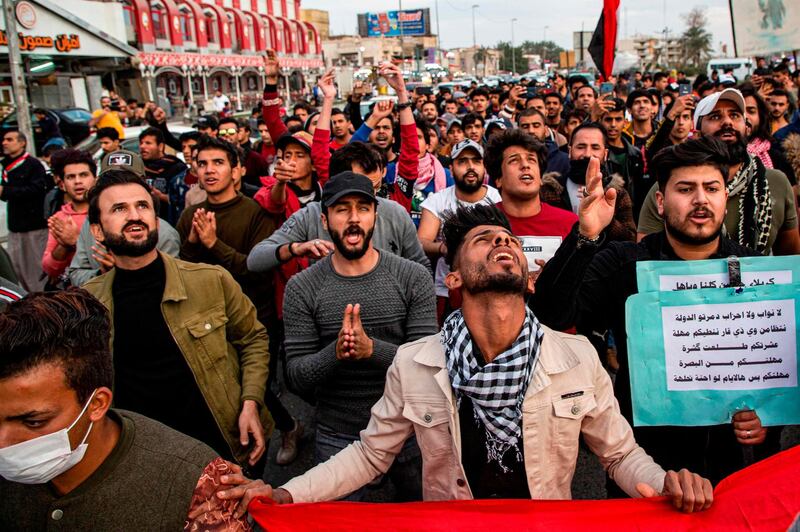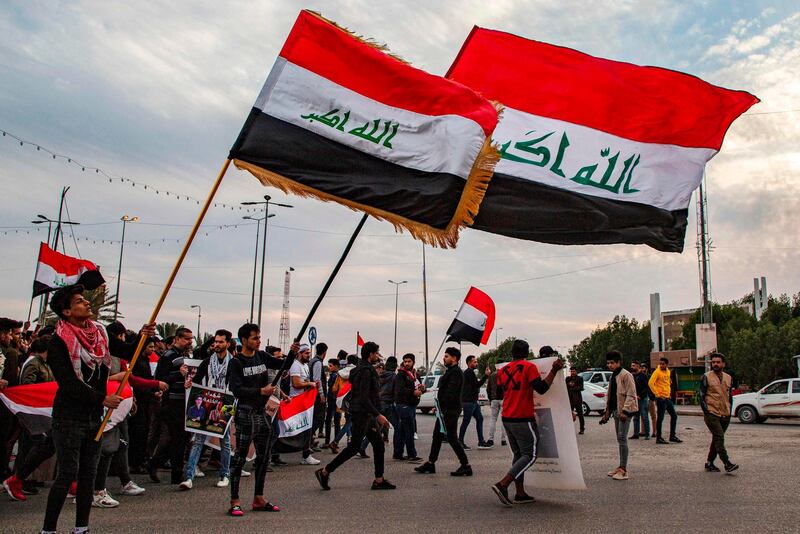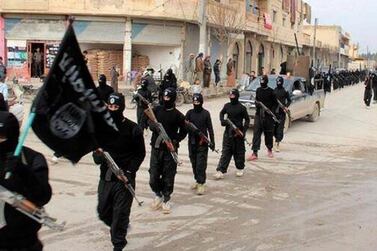At least two Iraqi protesters were killed during clashes with security forces on a key Baghdad bridge on Friday, months into a protest movement demanding a change in government.
Clashes flared suddenly on Friday evening as demonstrators attempted to cross Al Sinak Bridge in the heart of the Iraqi capital.
“Riot police attacked us at Sinak Bridge last night,” one protester told AP. “They fired teargas canisters and sound bombs. Some people died and others were wounded.”
Security forces, charged with preventing demonstrators from reaching the other side, fired tear gas, with one canister hitting a demonstrator in the chest and killing him.
A medical source said 25 people were also wounded or suffered breathing difficulties.
Angry demonstrations have rocked Baghdad and Iraq's south for the last three months, denouncing the country's political system which is seen as among the most corrupt in the world.
Since October, the unrest has seen well over 500 people killed and some 25,000 wounded, the vast majority of them demonstrators.
The movement, seeking sweeping political reforms and better jobs and services, has also faced a campaign of intimidation, abductions and assassinations.
The protest movement – and the violence meted out by security forces and Iran-backed militias – led to the resignation of Prime Minister Adel Abdul Mahdi on November 29 when Iraq’s top Shiite cleric, Grand Ayatollah Ali Al Sistani, withdrew support for his government. No replacement has yet been nominated.
In an attempt to bring back focus to the goals of the protest movement, anti-government protesters in the southern city of Nasiriyah gave the government a week’s deadline to take serious steps to implement changes. The deadline runs out early next week.
In late December, Parliament approved a new election law aimed at giving political independents a better chance of winning seats, a key demand of protesters. Once implemented, the new law would change each of the country’s 18 provinces into several electoral districts, with one legislator elected per 100,000 people.
But the protests have been overshadowed by the January 3 killing of senior Iranian commander Qassem Suleimani in a US drone strike in Baghdad, sparking fears Iraq would become embroiled in a conflict between Washington and Tehran.
The strike also killed top Iraqi paramilitary commander Abu Mahdi Al Muhandis, deputy head of the Hashed Al Shaabi military network, which is dominated by pro-Iran factions.
Iran responded on January 8 by firing missiles at Iraqi bases where American soldiers are deployed, without causing fatalities. The US military said on Friday that at least 11 American troops were being treated for symptoms of concussion.
Iraq Shiite cleric and political figure Moqtada Al Sadr has called for a "million-strong march" on January 24 to condemn the US military presence in Iraq.But he toned down his anti-US stance in a statement on Thursday, saying the march would be against “corruption and occupation", without specifying the US.
Mr Al Sadr has backed the protesters publicly and deployed fighters in some areas to try and protect the sit-ins. In the wake of the death of Al Muhandis, analysts say he may be trying to position himself as a successor or to build more influence among Shiite armed groups and political factions.
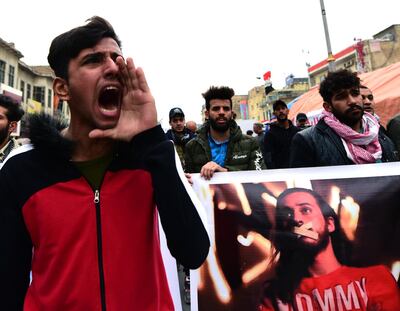
Iran responded five days later by firing missiles at Iraqi bases where American soldiers are deployed, without causing fatalities. The US military said on Friday that at least 11 American troops were being treated for symptoms of concussion.
Both sides signalled they were seeking de-escalation after the Iranian attack.
Iraq firebrand Shiite cleric and political figure Moqtada Al Sadr called for a "million-strong march" on January 24 to condemn the US military presence in Iraq. But he toned down his language on the anti-US aspect of the march in a statement on Thursday, saying it would be against “corruption and occupation", without specifying the US.
In an effort to bring back focus to the goals of the protest movement, anti-government protesters in the southern city of Nasiriyah gave the government a week to take serious steps to implement changes. The deadline runs out early next week.
